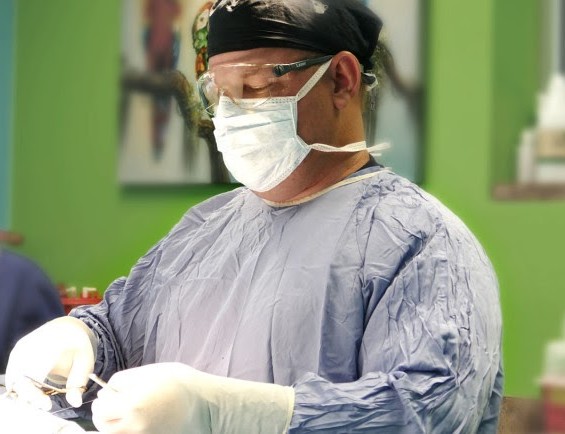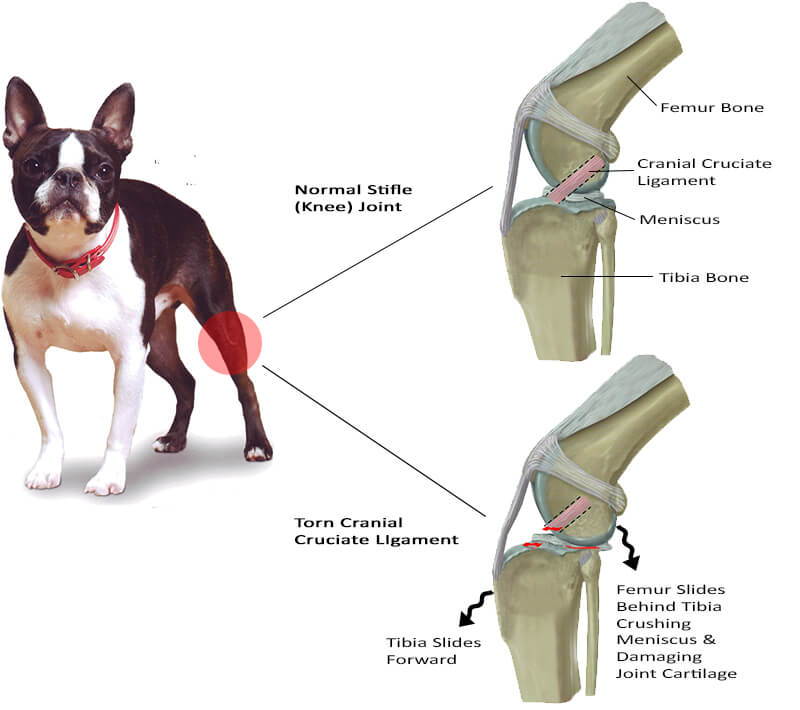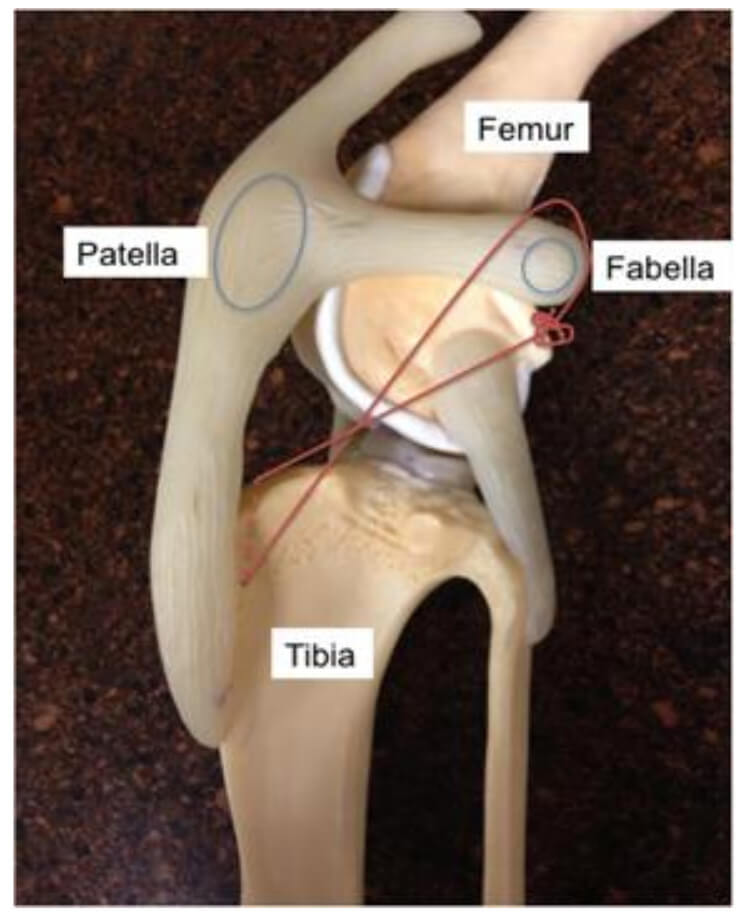TPLO Surgery At Cabarrus Animal Hospital, we are proud to offer Tibial Plateau Leveling Osteotomy (TPLO) surgery, performed by our skilled veterinarian, Dr. Blake Peurifoy. TPLO surgery is a specialized orthopedic procedure designed to treat cranial cruciate ligament (CCL) injuries in dogs. This surgery helps restore stability to the knee joint, allowing for improved mobility and a return to normal activity.
What is TPLO Surgery?
 The cranial cruciate ligament (CCL) in dogs is similar to the ACL in humans, and injuries to this ligament are common, especially in active breeds. TPLO surgery alters the dynamics of the knee joint, reducing the need for the ligament and preventing further injury or arthritis.
The cranial cruciate ligament (CCL) in dogs is similar to the ACL in humans, and injuries to this ligament are common, especially in active breeds. TPLO surgery alters the dynamics of the knee joint, reducing the need for the ligament and preventing further injury or arthritis.
Why Choose TPLO Surgery?
Effective for all sizes of dogs, especially larger breeds prone to CCL injuries. Long-term success: TPLO has a high success rate, with many dogs returning to full activity within a few months post-surgery. Prevents arthritis: Early surgical intervention can reduce the development of arthritis in the knee joint. Meet Dr. Peurifoy, Dr. Peurifoy brings years of experience in advanced orthopedic procedures to Cabarrus Animal Hospital. With a commitment to providing exceptional care, Dr. Peurifoy has performed numerous successful TPLO surgeries, helping dogs regain mobility and quality of life. The TPLO Procedure
- Consultation: Dr. Peurifoy will assess your dog’s condition through a comprehensive exam and diagnostic imaging.
- Surgery: During the TPLO procedure, the tibial plateau is adjusted to stabilize the knee joint without relying on the CCL.
- Recovery: After surgery, your dog will require a structured recovery plan, including rest and rehabilitation, to ensure optimal healing.
Post-Surgery Care:
Our team will provide detailed post-operative care instructions and will work closely with you during the recovery process. Most dogs will need some form of physical therapy to help them regain strength and mobility. Contact Us If your dog is suffering from a CCL injury or you suspect a knee problem, schedule a consultation with Dr. Peurifoy today to discuss whether TPLO surgery is the right option for your pet.

MPL Repair
Medial patellar luxation (MPL) occurs when the kneecap (patella) dislocates or moves out of its normal position, typically toward the inside of the leg. This condition is common in small-breed dogs, but it can also occur in larger dogs and cats.
Surgery is often recommended for pets with moderate to severe MPL, particularly if it causes pain, lameness, or arthritis. Symptoms of MPL: Limping or lameness in the affected leg Difficulty walking or running Abnormal gait or skipping steps Reluctance to jump or climb stairs Surgical Procedure: MPL surgery aims to stabilize the kneecap and return it to its normal position.
There are several techniques used, which may include:
- Trochlear groove deepening: Reshaping the groove where the kneecap sits to keep it in place.
- Tibial tuberosity transposition: Realigning the attachment of the patellar tendon to prevent luxation.
- Soft tissue reconstruction: Tightening or loosening tissues around the knee to support proper patellar alignment.
Recovery:
Post-surgery, pets typically need several weeks of restricted activity, including rest and limited movement. Physical therapy or rehabilitation may be recommended to regain strength and mobility. Full recovery may take 8–12 weeks, depending on the severity of the luxation and the surgical technique used.
Prognosis:
Most pets experience significant improvement in mobility and reduction in pain after surgery. However, there may still be a risk of arthritis developing in the affected joint later in life. Regular follow-up visits are essential to monitor healing and long-term joint health.
Prevention:
While MPL is often a genetic condition, maintaining a healthy weight and providing appropriate exercise can reduce stress on the joints and potentially lessen the severity of the condition.
MRIT (Modified Retinacular Imbrication Technique or Lateral Fabellar suture)
 The goal of this surgery is to restore stability to the knee joint by creating an artificial support structure that mimics the function of the damaged CCL. The Lateral Fabellar Suture is considered an “extracapsular repair” (ie, outside the joint). This procedure is very effective for most small-to-medium sized dogs and cats.
The goal of this surgery is to restore stability to the knee joint by creating an artificial support structure that mimics the function of the damaged CCL. The Lateral Fabellar Suture is considered an “extracapsular repair” (ie, outside the joint). This procedure is very effective for most small-to-medium sized dogs and cats.
In these surgeries, the knee joint is opened and inspected. The torn or partly torn cruciate ligament is removed. If the meniscus is torn, the damaged portion is removed. A strong monofilament suture is used to tighten the joint to prevent the shearing force in the knee (tibial thrust motion) and effectively takes over the job of the torn cranial cruciate ligament.
This surgery can be very effective and is typically reserved for smaller dogs or cats (often weighing less than 40 pounds). Although it’s typically the least expensive option for repair, it’s also considered the most vulnerable to failure (especially in dogs over 60 pounds). If the suture line breaks before the surgery site fully heals, a second surgery would be required.

